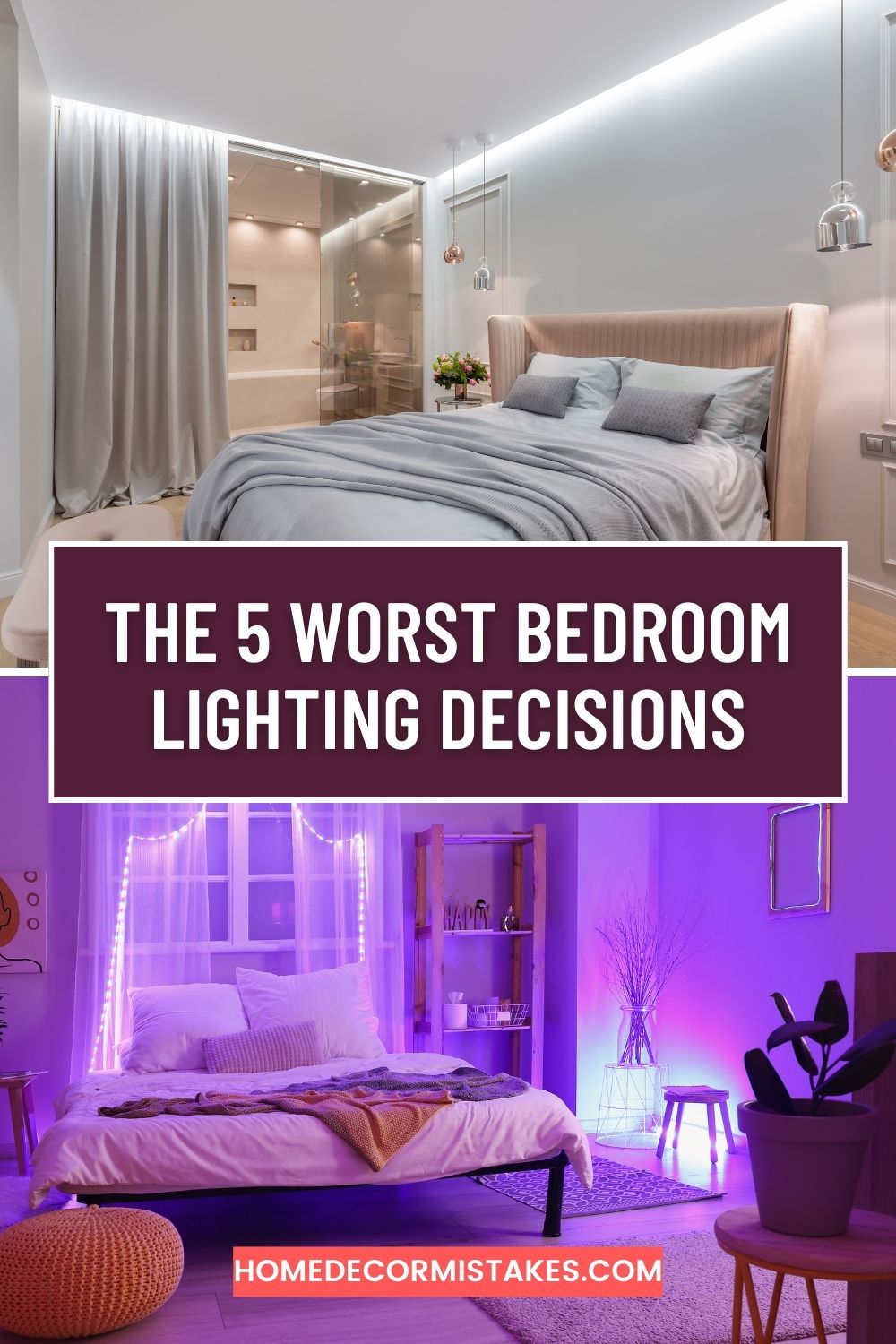The 5 Worst Bedroom Lighting Decisions You Can Make
Creating the perfect ambiance in your bedroom is essential for relaxation, comfort, and a good night’s sleep. However, lighting is often an overlooked aspect of bedroom decor. Poor lighting choices can lead to a space that feels uncomfortable, uninviting, and impractical. To help you avoid these pitfalls, we’ve compiled a list of the five worst bedroom lighting decisions you can make and how to steer clear of them.
1. Overhead Lighting Overload
Why It’s a Problem
Relying solely on a single overhead light fixture can create harsh, uninviting lighting that lacks depth and warmth. Bright, direct lighting can make it difficult to unwind and can cast unflattering shadows around the room.
The Solution
Layer your lighting by incorporating a mix of overhead lights, bedside lamps, and accent lighting. Use dimmable fixtures to adjust the light intensity based on your needs. This approach helps create a cozy and adaptable environment that caters to different activities, from reading to relaxing.
2. Ignoring Task Lighting
Why It’s a Problem
Bedrooms are multi-functional spaces where you might read, work, or get dressed. Ignoring task lighting can make these activities challenging and strain your eyes. Poorly lit spaces can also lead to accidents, such as tripping over objects in the dark.
The Solution
Add task lighting where it’s needed most. Place reading lamps or wall-mounted sconces by the bed, ensure adequate lighting for a vanity or dressing area, and consider a desk lamp if you work from your bedroom. Proper task lighting ensures that every corner of your room is functional and safe.
3. Choosing the Wrong Bulb Color Temperature
Why It’s a Problem
The color temperature of your bulbs can drastically affect the atmosphere of your room. Bulbs that are too cool (with a bluish hue) can make your space feel sterile and unwelcoming. Conversely, bulbs that are too warm (with a yellowish hue) can seem overly dim and cozy for certain tasks.
The Solution
Select bulbs with a color temperature that balances warmth and brightness. A range of 2700K to 3000K is typically ideal for bedrooms, providing a soft, inviting glow that is conducive to relaxation but still bright enough for other activities. Opt for LED bulbs that are energy-efficient and available in a variety of color temperatures to suit your needs.
4. Skipping Accent Lighting
Why It’s a Problem
Without accent lighting, your bedroom can feel flat and one-dimensional. Accent lighting adds depth and character to your space, highlighting architectural features, artwork, or decorative elements that make your bedroom unique.
The Solution
Incorporate accent lighting to showcase your favorite features. Use LED strips under floating shelves, place a spotlight on a piece of art, or use fairy lights to add a whimsical touch. Accent lighting should complement your overall lighting scheme and enhance the aesthetic appeal of your room.
5. Not Considering Natural Light
Why It’s a Problem
Natural light plays a crucial role in creating a balanced and healthy living environment. Ignoring natural light can lead to a bedroom that feels dark and gloomy, affecting your mood and overall well-being.
The Solution
Maximize the use of natural light by choosing window treatments that allow for flexibility. Sheer curtains, blinds, or shades can help you control the amount of light entering your room. Position your furniture to take advantage of natural light, and consider strategically placing mirrors to reflect and amplify the light throughout your space.
In conclusion, thoughtful lighting choices can transform your bedroom into a serene and functional retreat. By avoiding these common mistakes and implementing the suggested solutions, you’ll create a space that is both beautiful and practical. Remember to layer your lighting, incorporate task and accent lights, choose the right bulb color temperature, and make the most of natural light. Your bedroom should be a sanctuary, and with the right lighting, it can be just that.

